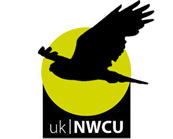On Monday 29th February 2016, fourteen men linked to an organised crime gang were convicted of plotting to steal rhino horn and Chinese artefacts worth up to £57m in a series of museum and auction house raids. Click here to read the full article.
When rhino horn thefts first began to be reported in 2012, the Animal & Plant Health Agency (APHA) noticed there was an upsurge in applications to re-export antique rhino horn. At the same time, the sale price of rhino horn started to rocket. For example, horn that was advertised at £3,000 was selling for 10x times that amount. Coordination between APHA and the National Wildlife Crime Unit (NWCU) led to approaches to UK auction houses to ascertain who the buyers of antique rhino horn were. The intelligence was fed into the NWCU database where it generated various links and indentified a number of nominals who had been using aliases or false details. Alerts and association charts were then created which were distributed out to all UK forces. NWCU intelligence officers also fed the nominal details through ANPR and Border Force in order to track movements with vehicles and passports.
The NWCU were instrumental in alerting the National Crime Agency and other international law enforcement agencies to the threat from this Organised Crime Group. Initially, there were various unconnected investigations across the UK , but the [then] head of APHA compliance called a meeting for the various OIC’s to collaborate in a joined up investigation. It was from here that the investigation was picked up by Durham and Cambridgeshire police, resulting in the recent conviction of fourteen members of the criminal gang.
NWCU also alerted police forces to the potential risk of theft of rhino horn as well as the possible threat to live rhinos in zoo’s and wildlife parks so that proactive preventative measures could be put in place.





